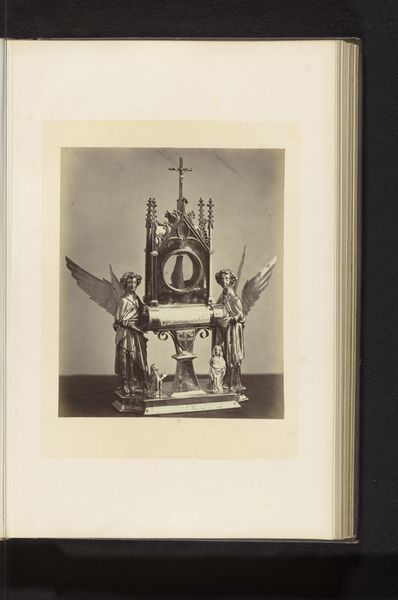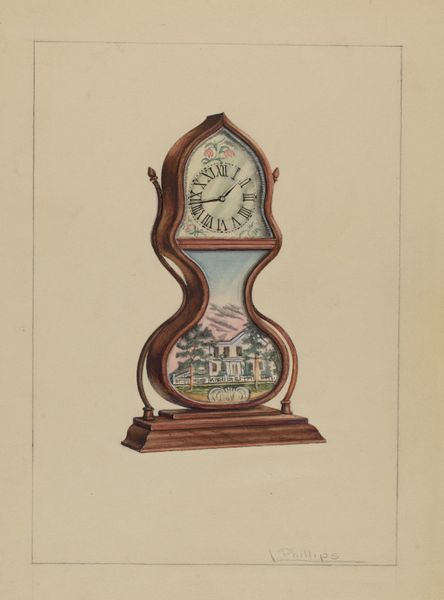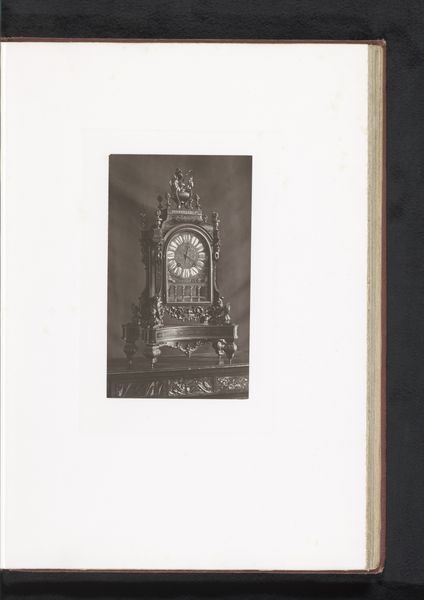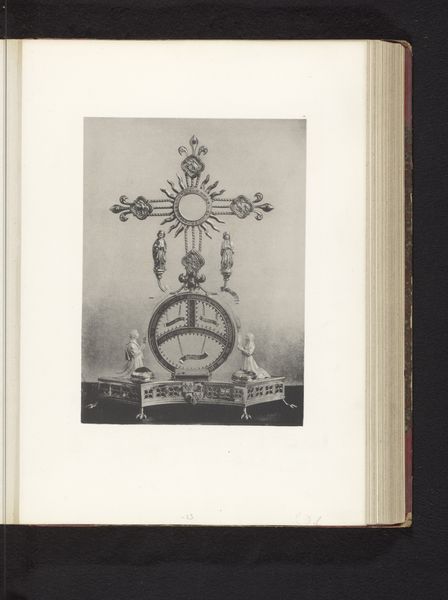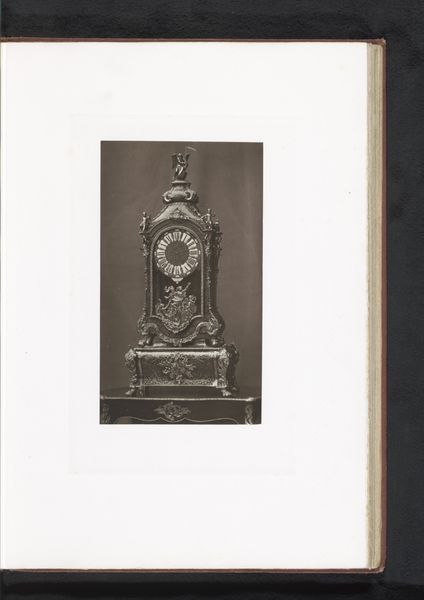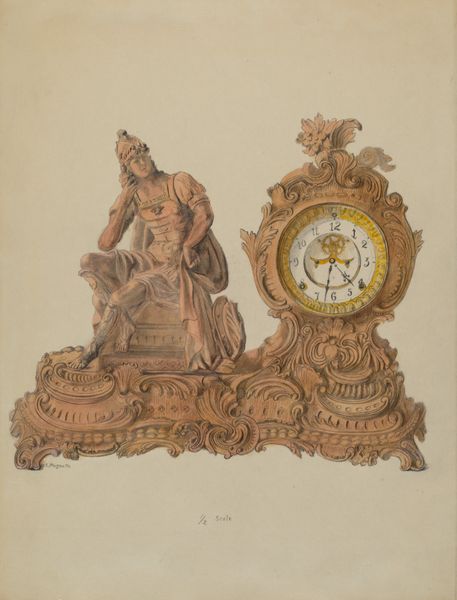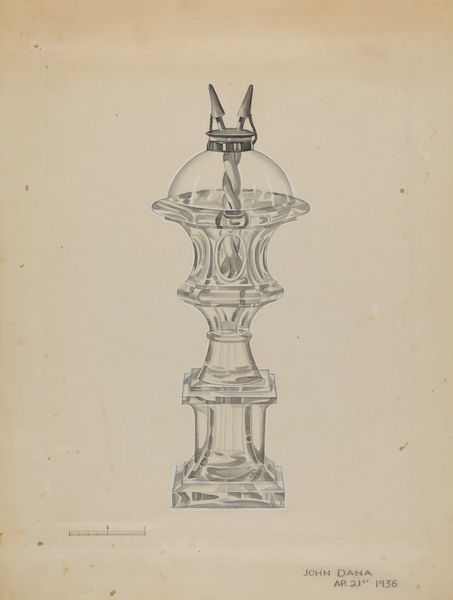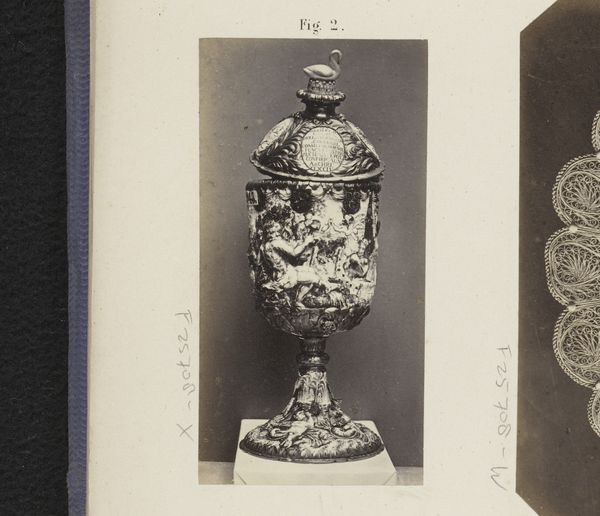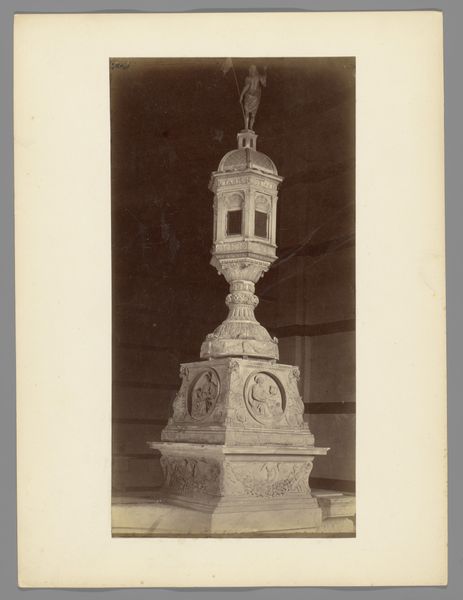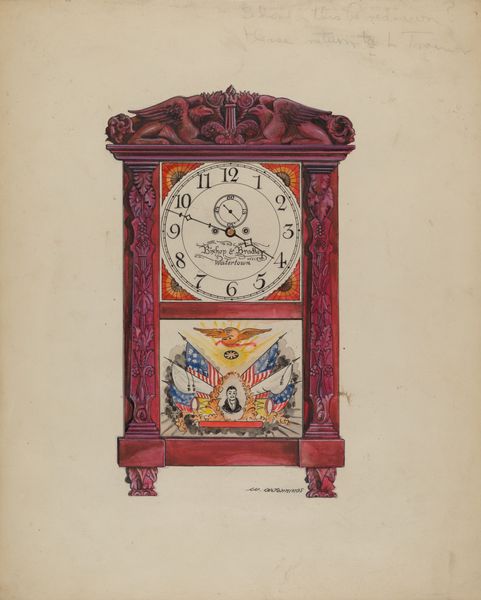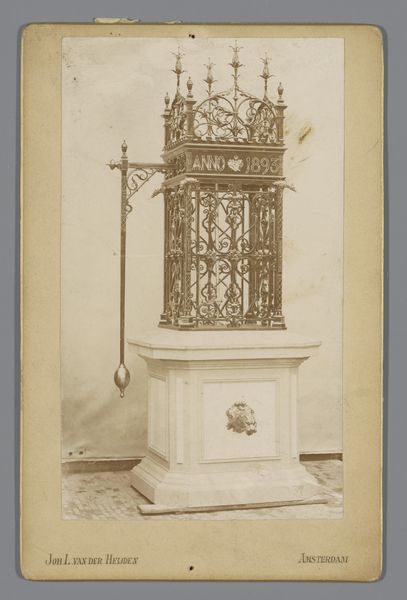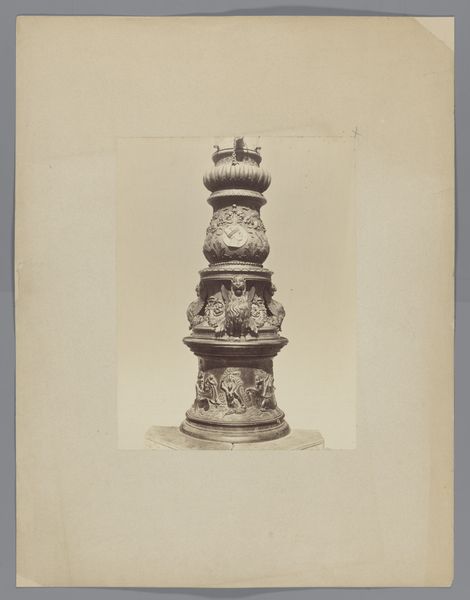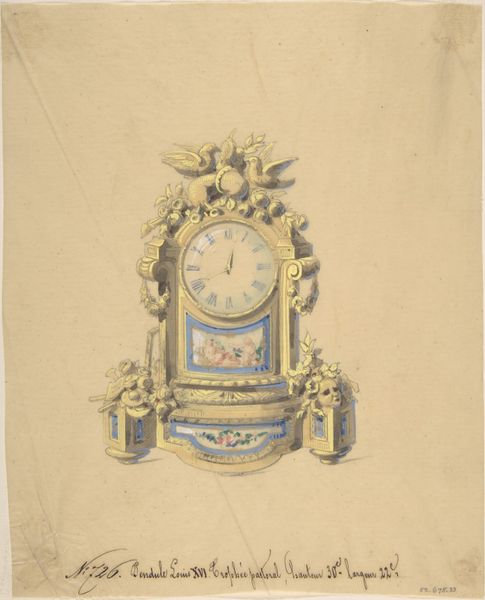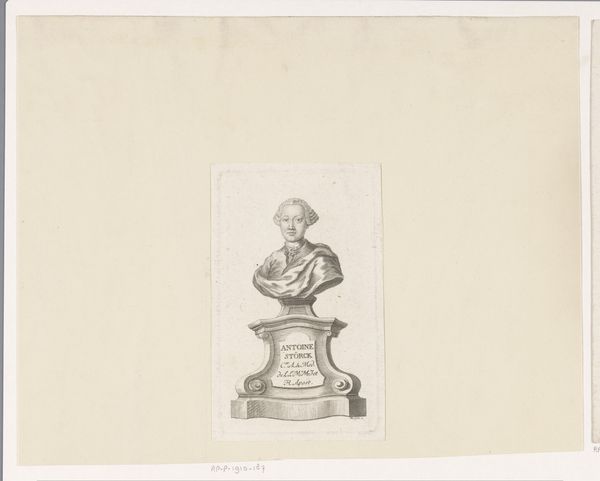
Pendule van prins Willem V op de Tentoonstelling van oudheden in Delft before 1863
0:00
0:00
print, photography
# print
#
photography
Dimensions: height 107 mm, width 58 mm, height 236 mm, width 321 mm
Copyright: Rijks Museum: Open Domain
Editor: So, this photograph captures "Pendule van prins Willem V op de Tentoonstelling van oudheden in Delft," taken before 1863 by A.L. Oversluijs. I’m really struck by the detail; it seems like an attempt to document something precious. What symbols stand out to you in this image? Curator: The photograph itself, a new medium, captures an "antique," showcasing Delft’s treasures. The clock is crowded with ornaments and seems a cornucopia of power. I notice that the feminine figures are adorning the clock’s case – how do you see these female forms functioning? Editor: I think the feminine forms symbolize luxury, wealth, even some idea of inherited power, considering the object's history. They definitely add to its ornate nature. Curator: Precisely. Consider too, that the fruits in the top of the clock would have stood for abundance, bounty, fortune itself. The eagle in the lower part, too, reinforces images of prestige, sovereignty and authority. Each element of decoration contributes meaning. This elaborate object speaks volumes. Editor: The fact that it's a photograph now lends another layer; a document of history, of how the past was viewed in that moment, almost like a cultural artifact. Curator: Yes! A layering of symbolic meanings across time and medium! Editor: Thinking about those symbols now really helps me appreciate the clock’s significance. It is a memory made visible. Curator: And isn't that what makes the study of cultural iconography so endlessly rewarding?
Comments
No comments
Be the first to comment and join the conversation on the ultimate creative platform.
